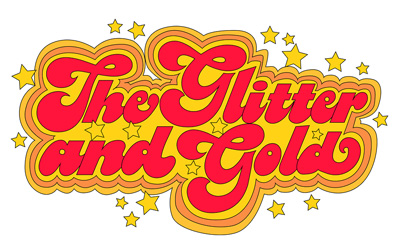The idea for Sgt. Pepper’s Lonely Hearts Club Band came to Paul McCartney on November 18, 1966. It struck while he was on an airplane returning to London from an African vacation. His next album, McCartney envisioned, would not be by The Beatles. Instead, it would present McCartney, John Lennon, George Harrison, and Ringo Starr as an imaginary band. Free from the heavy expectations which came from being Beatles, the four could play any music their hearts desired.
An album without precedent
Bringing this dream to life was no easy matter. Inspiration was essential. So was money. Ultimately it was hard work that pulled Paul McCartney’s fantasy into reality.
The Beatles’ first album had taken 9 hours to complete. Sgt. Pepper’s 39 minutes and 55 seconds of music took 700. The sessions took place between November 24th, 1966, and April 21st, 1967. Even at the time, musicians from groups such as Pink Floyd recalled looking on in reverent awe. Word had spread. The Beatles were making a masterpiece.
Sgt. Pepper’s cost $545,996 in today’s money
It was an expensive one. Sgt. Pepper’s Lonely Hearts Club Band cost £25,000 pounds to record. This would be $545,996 (US) in today’s money. The sum, staggering now, was unheard of at the time.
By way of contrast, The Beatles’ first album Please Please Please Me had cost only £400. Sgt. Pepper‘s elaborate cover alone came with a £2,800 bill. (At a time £25 to £75 was industry standard.) Even for a group as famous as the Fab Four, this was stretching the band’s resources to their limits. The investment, of course, paid off. The album has since sold more than 32 million copies.

Frustration
Frustration is the feeling which comes with being unable to achieve a goal. There were many barriers for The Beatles to overcome before Sgt. Pepper’s could be complete. Challenges were coming not only from the outside world. The Beatles harbored many doubts within themselves. Their embracing of marijuana and the freewheeling spirit of the 1960s, however, greatly assisted the four in circumventing them.
“Marijuana had started to work its way into everything we did,” Paul McCartney related in 20 years after the album’s May 1967 release. “It colored our perception. We started to realize there weren’t as many barriers as we thought.”
The Beatles recorded in a studio which was out of date
If there was one feeling hanging in the air, it was one of possibility. Since John Lennon had requested he wanted ‘Tomorrow Never Knows’ to sound like “the Dalai Lama singing from a mountaintop 25 miles away from the studio” in 1966, it was clear to those around The Beatles at Abbey Road that ideas came first and technological limitations second. This caused many challenges for Beatles producer George Martin and the studio’s engineers.
While Sgt. Pepper’s Lonely Hearts Club Band is considered a masterpiece, it was recorded on less than cutting-edge equipment. Despite Abbey Road’s legendary reputation, some of its equipment was, by George Martin’s measure, 9 years behind top-of-the-line US counterparts. The studio still used a 4-track recording system. This meant the Beatles’ elaborate musical visions had to be reduced to one of four tapes before being combined into a final album track. Arduous mathematical calculations were necessary to ensure sound quality remained high. The act of actually splicing these tapes together was likewise no easy task.
Yet The Beatles’ enthusiasm was infectious. With members of the band often recording 12 to 14 hours a day, those around them quickly fell under the spell of their enthusiasm. “It was new and exciting,” tape engineer Richard Lush recalled in 2017. “When we finished them we thought, ‘Wow, I can’t wait for people to hear this!’ Especially with things like ‘A Day in the Life’! Everybody was so proud of that song. We thought that it was something people were really not going to expect.”

The Beatles’ 41-person orchestra
Who, in 1967, could have anticipated a Beatles song incorporating a 41-piece orchestra? “It was crazy,” Paul McCartney recalled in 2019, “we told George Martin that we wanted to use an orchestra and he said, ‘No, no, it’s way too expensive!’ We said, ‘It doesn’t matter. We’re The Beatles, we can do that at this point in our career!’ So, he said okay.”
“Then,” McCartney continued, “once we realized we were going to use a symphony orchestra, he said, ‘Well, if you’re going to hire a symphony orchestra you can tell them what to wear’. We wanted evening suits – full, posh orchestral attire. They came along with that, and we said, ‘Can we really tell them what to wear?’ Yes. So, we suggested that they also wore funny hats and funny noses.”
“That was very, very Beatles,” Paul enthused, “we liked taking it to the extreme. A few people in the orchestra were good sports and put them on, and it was a fun session. That was fabulous to do.”
Courage
Sgt. Pepper’s Lonely Hearts Club Band was an ambitious record. Music like this had never been heard before. Even compared with The Beatles’ Revolver, which had arrived in 1966, Sgt. Pepper’s was a far remove.
To The Beatles, it was a creative leap of faith. The four had embraced what George Harrison termed the “All You Need is love consciousness after our LSD period.” With their Sgt. Pepper’s disguises allowed them to express their new feelings freely and with confidence.
Sgt Pepper‘s was a statement of maturity. These were no longer four boys from Liverpool. This was more than just the fact they sported their newly grown mustaches on the cover. The Beatles were uncovering the courage to be themselves. “We were fed up with being Beatles,” Paul McCartney shared in 1994, “we were not boys, we were men.”
Silly jokes and puns were left behind. With Sgt. Pepper’s The Beatles sang, more than ever before, honestly about their lives and what they felt. They were free and they were artists. And there was a tremendous value in that freedom.

The Beatles’ perseverance
The album’s cover was another obstacle. The idea of The Beatles including all of their heroes on the front of Sgt. Pepper’s, alongside themselves, met with stiff resistance from record label EMI. Hitler, Jesus, and Gandhi were instantly vetoed. It was only after their removal, along with The Beatles’ undertaking they would accept liability for lawsuits, that the now-iconic image was approved.
The Beatles stuck to their guns. They refused to buckle on either the cover or the album’s content. The cover, after all, reflected the music. And the music? It reflected the cover. Sgt. Pepper’s was not simply a collection of recordings and a groovy graphic. It was an artistic statement.

Patience
The Beatles were patient. Not just with the creative process or record label politics. There were growing tensions in the band. After 10 years their tight and brotherly bond was breaking down. This was not a matter of jealousy or anger. It was growth. Each was embracing increasingly divergent tastes, philosophies, perspectives, and creative goals.
Paul McCartney was bursting with enthusiasm. Ringo Starr was likewise excited to play the part of Sgt. Pepper. John Lennon and George Harrison, however, were undergoing profound personal changes.
George Harrison was largely absent from Sgt. Pepper’s. Occupying his time was a newfound fascination with Indian philosophy, music, and perhaps most significantly spiritual beliefs. He had recently taken a mind-opening vacation to India. Later he shared his mind had remained there during the recording of Sgt. Pepper‘s. Nevertheless, ‘Within Without You’ not only testified to his emerging status as a songwriter, it stunned his bandmates.
Despite the vocal bliss and musical genius of Lennon’s contributions, he too was becoming increasingly distant. The Beatles’ founder later revealed he was “going through murder.” Having grown up without a father, he was struggling to fit into his home life with his wife Cynthia and son Julian. What is more, he was consuming a prolific amount of cocaine and LSD. By his own later admission, Lennon had fallen into a state of deep depression.
George Martin on The Beatles

The Beatles captured the spirit of the times
Sgt Pepper’s took risks. Many around The Beatles had reservations. Would the public accept it? They need not have worried. The album captured perfectly the spirit of the times.
“After the apocalypse of Hitler,” poet Allen Ginsberg later reflected, “and the apocalypse of The Bomb, there was here [in Sgt. Pepper’s] an exclamation of joy, the rediscovery of joy and what it is to be alive… [the Beatles] showed awareness that we make up our own fate, and they have decided to make a cheerful fate. They have decided to be generous to Lovely Rita, or to be generous to Sgt. Pepper himself, turn him from an authority figure to a figure of comic humor, a vaudeville turn.”
Sgt. Pepper’s Lonely Hearts Club Band turns 54
The impact of Sgt. Pepper’s cannot be understated. It was the first rock album that outsold singles. Overnight, The Beatles moved the music industry away from singles to album sales. Vinyl albums were no longer collections of songs. They were acts of creation, vehicles for genius, and hidden meaning.
The Beatles broke away from the pop formula. Then, having done so, pushed down the barriers of popular music itself. Embracing who they were, John, Paul, Ringo and George expressed themselves with honesty and confidence. In doing so, they bid a generation, and many which followed, to do the same. To achieve this The Beatles not only placed tremendous faith in their audience. They also trusted in each other. And, most importantly, themselves.

The Beatles in 1967.
Final thoughts on The Beatles and Sgt. Pepper’s
The results exceeded even the Beatles’ ambitious expectations. 54 years later, Sgt. Pepper’s remains unsurpassed in its achievements. Millions continue to be astonished and delighted by its music. To others, it offers a revelatory and life-changing experience. Perhaps it was John Lennon who put it best. “Sgt Pepper is the one,” he would later share. “It is the peak.”










